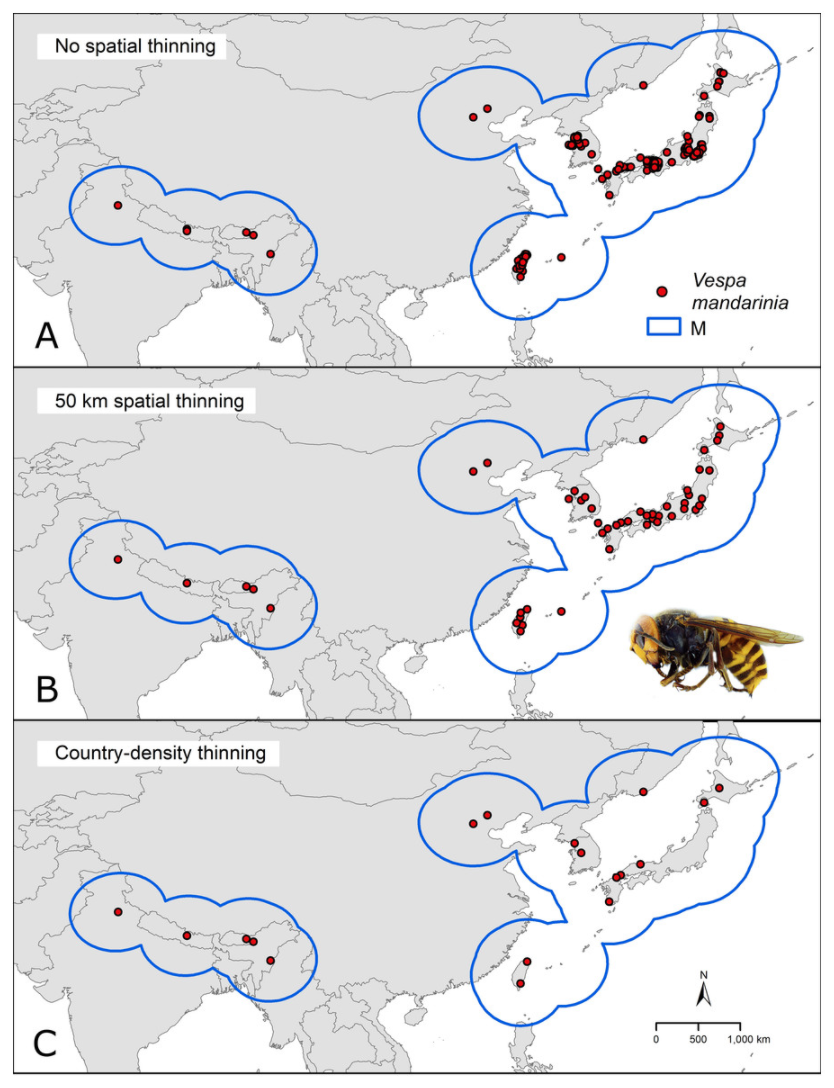PeerJ spoke to Claudia Nuñez-Penichet about the recently published article Geographic potential of the world’s largest hornet, Vespa mandarinia Smith (Hymenoptera: Vespidae), worldwide and particularly in North America. Claudia is a Ph.D. student in Ecology and Evolutionary Biology at the University of Kansas.
Can you tell us a bit about yourself?
I am a Ph.D. student in Ecology and Evolutionary Biology at the University of Kansas. I work with insects and I am interested in species distributions, ecological niche modeling, population genetics, and conservation, specifically of neotropical Lepidoptera. Under the supervision of Dr. Jorge Soberon, I am currently working with the moths of the genus Urania, which includes very charismatic species with a very interesting relationship with their host plants.
Can you briefly explain the research you published in PeerJ?
The study published on PeerJ is the result of a great collaboration of several members of the KUENM group, a group of professors and graduate students interested in ecological niche modeling here at University of Kansas. In this study, we assessed the suitability of climatic conditions for the Asian Giant Hornet (AGH, Vespa mandarinia) in North America, simulated the potential spread of this species under distinct assumptions, and suggest that, without control, this species could establish populations across the Pacific Northwest and much of eastern North America. This species is the world’s largest hornet and is a voracious predator of pollinating insects including honey bees. Its native distribution is in the Indomalayan region but has been recently found in North America (British Columbia and Washington state). Due to the potential impact of this species on native pollinator species, humans, and the economy (e.g., honey production), our study offers some views of the potential for invasion of V. mandarinia in North America to guide future eradication attempts. As part of our results, we observed that potentially suitable areas for AGH and areas in North America that could be invaded, based on simulations, overlap broadly with areas where honey production is highest, as well as with species-rich areas for native bumble bees and stingless bees in Mexico. Our results highlight the necessity of controlling the invasion of the AGH in North America.

Figure 1: Hypothesis of accessible areas (M) and representation of the occurrence records of Vespa mandarinia across its native distribution.
Do you have any anecdotes about this research?
This research was a great learning experience for me. Working with this many colleagues from different parts of the world was very exciting, despite the challenges of working remotely in the middle of an ongoing pandemic. This project started when one of the co-authors of this paper shared in the lab chat an article reporting the presence of the Asian Giant Hornet (AGH) in North America and immediately many of us got interested. At first, the idea was detecting potentially suitable climates for the AGH in North America, but it got richer and more complicated as we discussed possible methods and expected results. From my point of view, finding a way to present and discuss a consensus of the different results was challenging but helped me to learn a lot in the process.
What kinds of lessons do you hope your readers take away from the research?
We would like the readers to understand the need for a rapid and efficient response to eradicate this dangerous invader from North America. We hope they see this research as an example of how ecological niche modeling tools are useful to estimate unknown distributions to take more informed prevention and conservation measures. Very importantly, we would like to show an example of how uncertainty, or at least variability, can be presented in this type of studies.
How did you first hear about PeerJ, and what persuaded you to submit to us?
I first hear about PeerJ when a lab colleague (and co-author of this research) published his manuscript there. After that, I was a co-author in another manuscript that was published there as well, and the overall experience we had, persuaded us to choose this journal for publishing this work.
Do you have any comments about your overall experience with us?
We are pleased with the experience with PeerJ.
How would you describe your experience of our submission/review process?
The submission process was simple, and the journal staff was very responsive to our questions during this process. The revisions were fast and rigorous, which decreased the publication time and increased the quality of our manuscript.
Would you submit again, and would you recommend that your colleagues submit?
Absolutely!
You can read more PeerJ author interviews here.

